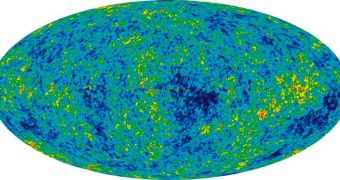Investigators from Switzerland explain that the potential discovery of the Higgs boson would help astronomers and astrophysicists gain a better understanding of how the Universe expands. The finding would also enable scientists to explain how the Cosmos expanded during its earliest days.
Under the guises of the Standard Model of Particle Physics, the Higgs boson is the fifth force carrier, a massive particle that can convert energy into matter. As such, it is tremendously important, and critical to a number of scientific theories.
Efforts to detect this particle are well underway, and the European Organization for Nuclear Research's (CERN) Large Hadron Collider (LHC) has the highest chances of making the first discovery. Experts expect to either confirm or infirm the existence of the Higgs within a couple of years.
Physicists at the Ecole Polytechnique Federale Lausanne (EPFL) say that the particle may also be used in conjunction with datasets provided by the European Space Agency's (ESA) Planck satellite, in order to resolve some long-standing mysteries associated with how the Universe evolved.
Immediately after the Big Bang rapidly expanded everything into being, the Cosmos entered an inflationary phase, during which time it grew by a factor of 10^26 over a very short time frame. Physicists have been trying to account for what triggered this growth for many years.
According to EPFL Laboratory of Particle Physics and Cosmology (LPPC) experts led by Mikhail Shaposhnikov, the very existence of the Higgs boson could explain both the speed and magnitude of this rapid expansion process, Daily Galaxy reports.
The particle itself may have been responsible for reshaping the earliest laws of physics in the infant Universe, since the boson would have existed in a condensate phase. It may have changed the force of gravity as well, the team proposes.
“We have determined that when the Higgs condensate disappeared to make way for the particles that exist today, the equations permitted the existence of a new, massless particle, the dilaton,” EPFL physicist Daniel Zenhäusern says.
Using a mathematical method called scale invariance, the group was able to infer the existence of this new particle, which is a “cousin” to the Higgs. The team was also able to calculate some of its properties, as well as predict its behavior.
Interestingly, the new particle features some of the same traits that researchers hypothesize the particles making up dark matter should have. The Swiss group believes that this goes a long way towards explaining the way the Universe is expanding.

 14 DAY TRIAL //
14 DAY TRIAL //